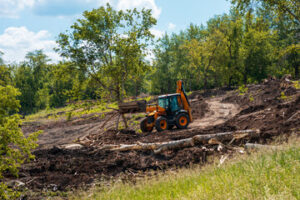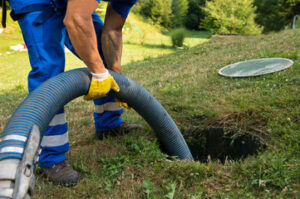Chimney Sweeps are certified technicians who use specialized tools to clean your chimney and fireplace. This will remove creosote, a hard, toxic residue that builds up when wood or fossil fuel is burned.
Chimney sweeps are trained professionals who clean chimneys, smoke ducts, fireplaces and flue pipes to prevent dangerous gas emissions and soot fires. They follow specific guidelines and procedures for their work, and educate homeowners on proper burning techniques to avoid fire hazards. Additionally, chimney sweeps inspect and address blockages and other problems in the structure of a chimney such as cracked crowns or deteriorating masonry. Visit https://chimneysweepcharleston.com/ to learn more.

The chimney sweeps primary tool is a rod that resembles a giant bottle brush with metal bristles around the top. Using this, they remove creosote (a thick, toxic coating of debris created when fossil fuels or wood burn) and soot from the inside of a chimney and flue. They typically start at the bottom and work their way up to the top. The chimney sweep may also use a vacuum system to decrease soot dust levels within the home and will wear masks, goggles and drop cloths for their own protection.
Before chimney sweeping begins, it is important to clear the area around the fireplace and any nearby furniture. This will make it easier for the sweep to work and ensure nothing gets knocked over or broken in the process. In addition, it is best to unplug any fireplace tools and remove any unused logs from the firebox. Lastly, you should keep children and pets away from the area while a chimney sweep is cleaning your chimney.
Today, a professional chimney sweep will bring everything needed to complete their job, including drop clothes and long-handled brushes. They will also carry a ladder and flashlights. If they need to do a Level 2 or Level 3 inspection, they will bring video equipment as well.
Historically, chimney sweeps used to be child laborers, known as “climbing boys”. They were often hired because of their small size, which allowed them to fit into narrow chimney passageways. However, this work was often dangerous and unsanitary, and children frequently died as a result of suffocation or falls. William Blake’s poem in his Song of Innocence, “The Chimney Sweep”, is a tragic reminder of this sad part of our nation’s history.
Safety Measures
Chimney sweeps are licensed and trained to inspect chimneys and recommend necessary maintenance. They perform both visual and mechanical inspections, following standards set by local and national fire safety organizations. The inspection process typically includes evaluating the structural integrity of the chimney, checking for signs of damage to the chimney crown or flashing, and reviewing the condition of the flue. In addition, they check for creosote accumulation and obstructions that impede airflow.
A professional chimney sweep will also use tools to remove the creosote and other debris from the chimney. They may employ chemicals that soften the hardened creosote deposits, making them easier to brush or scrape away. They also utilize special vacuum systems to contain the debris during the cleaning process, ensuring that it doesn’t fall back inside the fireplace or living space.
A clean chimney is vital for preventing chimney soot fires and carbon monoxide poisoning. In fact, dirty chimneys are the leading cause of house fires in the United States. Chimney sweeps prevent these dangerous hazards by removing flammable material from the fireplace and chimney, assessing their structural integrity, and recommending maintenance and repair services as needed.
Regular chimney sweepings also reduce the risk of carbon monoxide poisoning by ensuring that smoke byproducts are properly vented. In addition, they help prevent blockages from birds’ nests, leaves, and other debris that can reduce airflow and lead to toxic fumes.
Although many homeowners are able to clean their own chimneys, doing so requires special safety precautions and knowledge of proper cleaning techniques. It’s important to wear gloves and a dust mask, as soot and other debris can get into the eyes and mouth. It’s also a good idea to work as part of a team, as this provides added support and another pair of hands in the event of an accident.
When hiring a chimney sweep, look for one who offers an upfront quote and guarantees their work. A reputable company will also offer a variety of cleaning options to meet the needs of each customer. In addition, they will provide a comprehensive list of services, as well as testimonials and a map of service areas to build trust with potential customers.
Tools
A chimney sweep’s toolkit includes everything from a wire chimney brush to a specialized sweeping vacuum. These tools allow them to clean and inspect chimneys, flue pipes, fireplaces and venting systems, preventing dangerous creosote buildup and soot fires.
Sweeps also use a variety of chemical-based cleaning agents to help break down creosote deposits and make them easier to remove with their brushes and scrapers. They are trained to safely handle and apply these chemicals, protecting themselves and the homeowner from harm and ensuring that all deposits are removed during the cleaning process.
Chimney sweeps also use a variety of other tools to perform inspections, including cameras and special rods that provide an inside view of the flue lining and identify any cracks or structural damage. These tools are essential for identifying hazards that could pose a fire risk or increase carbon monoxide exposure, such as water leaks in the flue liner, missing or cracked masonry, and animal nests.
Professional chimney sweeps are trained to maintain all types of fireplaces and chimneys, from wood stoves to gas-powered fireplaces and even oil-fired furnaces. They can also offer advice about proper burning practices and how to improve the efficiency of a fireplace or chimney system.
A common sign that you need to call a chimney sweep is an unpleasant odor or fumes from your fireplace. These are often signs of excessive creosote buildup, which can cause a chimney fire or expose you and your family to harmful smoke fumes. Other signs include a rusty or leaky fireplace or chimney, animals crawling around the chimney stack, and chipped bricks or other damaged materials on the ground near your fireplace.
In addition to specialized chimney sweep equipment, many modern professionals use software and other technological advancements to improve efficiency, productivity, and safety in their work. For example, GPS systems allow chimney sweeps to stay on schedule and reduce travel time, increasing customer satisfaction and improving business bottom lines.
Schedule an Appointment
With the chill of fall in the air, many homeowners are ready to light up their fireplaces. However, before you do, it is important to make sure your chimney is clean and in good working condition. Dirty chimneys are responsible for hundreds of home fires and carbon monoxide poisoning incidents every year. Chimney sweeps can help prevent these hazards by conducting regular cleaning and inspections.
Chimney sweeps are trained professionals who follow specific guidelines and procedures to guarantee a thorough, mess-free job. The sweep will bring specialized tools, brushes and supplies to scrub and clean your fireplace, chimney and flue pipe. The sweep will also inform you about proper burning techniques to avoid soot and gas emissions. In addition to cleaning chimneys, sweeps can also conduct repairs and install chimney caps, fire-stops, chimney dampers and flue liners.
It is best to avoid lighting a fire in your fireplace for 24 hours prior to the sweep’s arrival. This allows time for the masonry to cool. You will also want to remove any logs, grate and fireplace tools from the firebox. It is also a good idea to cover nearby furnishings in case the chimney and fireplace cleanup produces soot and dust particles that may drift into your home.
While it is not possible to fully clean a chimney flue, the chimney sweep will remove as much soot and creosote build-up as possible. Chimney sweeps can also conduct a Level 1 or Level 2 inspection to assess the condition of your fireplace and chimney. This includes a visual check of the exterior, a look inside your fireplace to see how it is functioning and an up/down examination of your chimney and flue with a flashlight.
A combination sweeping and inspection provides an in-depth assessment of your fireplace, chimney and entire masonry system. This will alert you to potential problems that could require a costly repair or present a safety risk. It is best to address these issues before they become a major problem that threatens your family’s safety.








